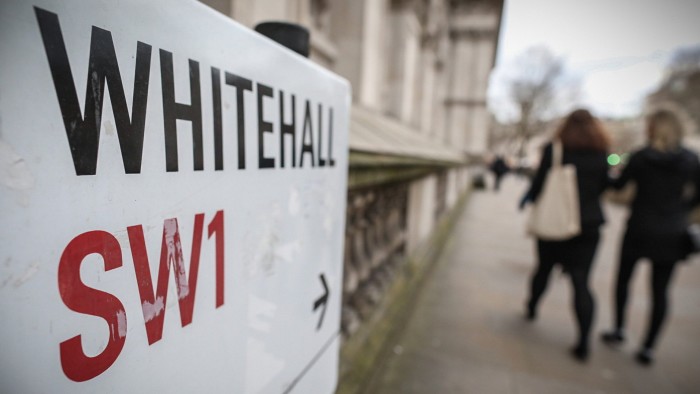Unlock the Editor’s Digest for free
Roula Khalaf, Editor of the FT, selects her favourite stories in this weekly newsletter.
The average number of long-term sick days missed by civil servants each year has hit a post-pandemic high, according to new figures revealed by the Cabinet Office.
The statistics, which show how many days have been missed annually by staff since 2015, reveal that on average civil servants missed 3.51 days to long-term sickness in the year ending March 2023, up from 2.86 in 2021.
Across the country, a record 2.8mn people are currently on long-term sick leave, which is defined of four weeks or more of absence. Tackling the problem is a key focus of the government’s “Get Britain Working” plan, which was announced in November.
The proposals include £240mn of further investment and a commitment to reduce NHS waiting lists at the 20 NHS Trusts across England with the highest levels of economic inactivity.
The worst department for absences was the Ministry of Justice, where staff missed an average of 6.9 days to long-term sickness last year.
HM Revenue & Customs saw the largest growth of days missed by any department, with staff missing an average of 4.5 days in 2023 — up from 3.9 in 2022 and the highest level since before 2015.
In total, the number of days lost across all departments in 2023 was 1,934mn, up from 1,858mn in 2022 and 1,450mn in 2021.
Mike Clancy, general secretary of the Prospect trade union, said several factors were at play in explaining the figures.
He said “the crisis in the NHS, with workers struggling to access care” was a determining factor, in addition to a problems accessing “timely mental health services”.
He noted that sickness absence has been rising across the economy, with the issue not solely a civil service problem.
A 2023 ONS report found that 4.8 days were lost on average to sickness per central government worker each year, compared with 5.0 in the private sector. These figures covered all sickness absences, rather than just long-term sickness.

“The vast majority of workers off sick want to be back at work,” said Clancy. “As a union we want to work with employers to ensure that together we can work out what, if any, problems are directly work related and put the right support in place to get members back working.”
Liberal Democrat MP Helen Morgan, whose question in Parliament led to disclosure of the figures, said they were “symptomatic of the crisis in health and care that this country is experiencing after years of the previous Conservative government’s shameful neglect”.
Morgan, the party’s health and social care spokesperson, added: “The new government must recognise that we cannot bring these numbers down and get people back into work without first rescuing the NHS.”
A government spokesperson said: “These rises are broadly in line with those seen in the private sector — the latest available data from the Office for National Statistics shows the central government had lower rates of sickness than the private sector.
“Sick leave is managed by individual departments and there is clear guidance on this. Measures are in place for those employees struggling with ill health to return to work as quickly as possible.”



